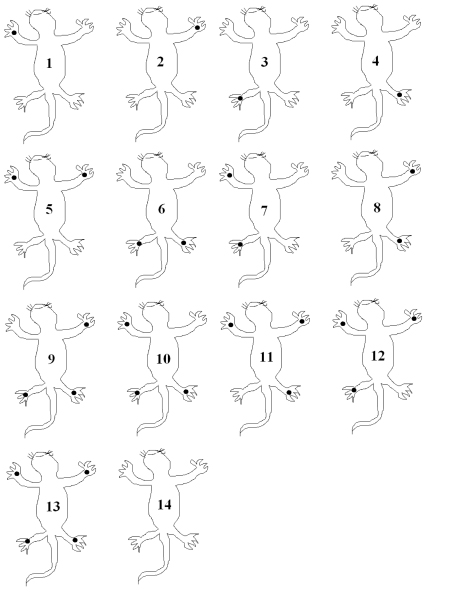Introduction
This protocol (developed by Andrew Dahlem and Ron Conlon) outlines the steps necessary to foster mouse pups using a few cheap materials. The procedure has proven effective for the 129 inbred strain. The use of Depo-Provera to delay delivery is based on a protocol (http://www.emmanet.org/protocols/GermFree_0902.pdf) from the European Mouse Mutant Archive (EMMA).
Materials
- 2 small plastic Ziploc containers
- Depo-Provera (Henry Schein Veterinary 9080501TV, 150 mg/ml)
- 1 ml Syringes, 25 to 30 gauge needles
- Bottle of India ink
- Surgical scissor/forceps
- Centrifuge tubes
Procedure
Procedure Prior to Fostering
The mother whose pups will be fostered is injected with Depo-Provera on E17 to prevent delivery, and pups C-sectioned on E20, and fostered to an E19 CD1 foster mom. The CD1 mum reliably gives birth the morning of E19. The donor is plugged one day before the CD1 foster mum. To keep the females calm and to promote acceptance of the foster litter, the matched donor and recipient females are housed together throughout.
On the donor's Day 17, inject 5 mg Depo-Provera (0.03ml of 150 mg/ml) subcutaneously (scruff the neck, insert the needle between your fingers, then withdraw it slightly before depressing the plunger). The morning of the CD1 foster mother's Day 19, the CD1 foster will give birth. The morning is the best time to foster the pups.
Fostering Procedure
Note: This procedure should be done with as much haste as possible. Timing is key to successful fostering.
Prior to fostering, fill one of the plastic containers with warm tap water, putting the other on top so that the water is in between, making a mini-incubator. Sacrifice the donor mother. Make a small incision at the base of the belly. Cut horizontally in both directions from this incision and vertically up to the sternum. Carefully pull the entire uterus out of the abdomen and cut the tissue connecting the uterus to the body. Very carefully make another small incision in the uterus between each pair of pups in the uterus and squeeze the two adjacent pups out of the uterus. Be sure to remove all pups before tending to the previously removed pups.
Once all the pups are removed, clean off the amniotic fluid on each one in turn. Put light pressure on the chest, clearing out any fluid that bubbles from the mouth or nostrils. Rotate cleaning, massaging, and putting pressure on each pup until a regular breathing pattern is established. At birth, pups will be a grayish color and will periodically gasp for breath. When a regular breathing pattern is established, the chest will turn pink, followed by the rest of the body. The breathing will be less labored and much shallower. Be sure to keep the pups in the warm incubator when they aren't being massaged.
Once regular breathing patterns are established, clean off the scissors and forceps with ethanol. Remove each pup from the incubator and cut the tip of the tail off and place it in a centrifuge tube (this step can be skipped if genotyping is not necessary). Next, use the syringe to draw up India ink from the bottle, injecting a small drop into the pup's paws according to the unique identifying pattern (see below). Quickly repeat with each other pup making sure to clean the scissors and forceps each time with ethanol to prevent contamination.
To complete the fostering process, remove all but a few of the foster mother's pups and place in the incubator. Sprinkle the foster mother's pups and the donor pups with bedding from the foster mother's cage. Toss around the pups and the bedding together gently for a few seconds. Place the donor pups and a few of the original pups back into the cage--keep the litter size between 6 and 10 (we found that growth rate is inversely related to litter size). Put the cage into the rack and do not disturb for two days.
Two days later, count to ensure the donor pups have survived the fostering process. Early in life, be sure to disturb the foster mother's nest location as little as possible.
